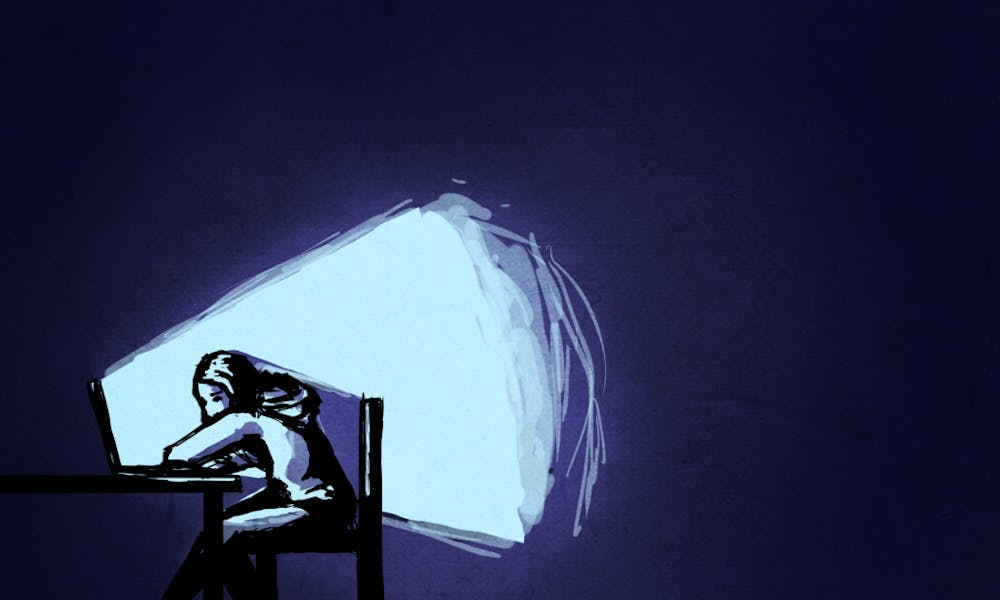At first glance, taking your classes from the comfort of your home seems like it would make the day much less tiring: there's no commuting, no rushing across campus between classes, and no scrambling to grab a coffee before your 9 a.m. However, just a few weeks into classes, college students at Penn and across the country have found themselves combatting a new form of exhaustion: Zoom fatigue.
Back in April, Google searches for this phenomenon spiked as the U.S. transitioned to work—and school—from home. As for why a seemingly easier electronic school day is leaving everyone feeling more burnt out, Harvard Business Review explains that during video lectures, students have to focus harder to ensure that they retain all of the class material.
Back in the days of lecture hall learning, if we lost focus during class, we could nudge whoever was sitting next to us and ask about the slide we missed or raise a hand to interrupt with a quick clarifying question. With these options gone, it's up to us to stay focused for the entire period.
Working entirely from your computer—with no professors or teaching assistants walking around the room to make sure you stay on task—also provides a new set of distractions. While staying alert in in–person lectures was hard enough, in the era of Zoom school, many students find themselves reading emails, mindlessly scrolling through social media, or perhaps even working on an assignment—all while in class.
Zoom fatigue also arises from how we express engagement through video communication. It's much more difficult to notice all of the typical signs that demonstrate attention over a screen, especially through a small floating thumbnail. In this new reality, the most straightforward way we can demonstrate that we are paying attention is to stare continuously either at the lecturer and their slides or into our computer camera.
Looking elsewhere or turning your camera off could suggest a lack of concentration, especially in smaller discussion–based lectures. Thus, we often find ourselves staring at one spot on our screen for hours every day. Taking fewer visual breaks during class time can give rise to brain fatigue. Furthermore, the blue light emitted by our electronics is known to cause eye strain and headaches.
In a world where you can go an entire day without taking your eyes off of a computer, the exhaustion we feel from online classes is real. Luckily, there are several ways that we can combat this Zoom fatigue:
First off: take breaks! Scheduling some downtime during the school day is crucial, especially when you have back–to–back classes. In pre–COVID–19 times, we were used to having at least a ten–minute transition period between classes to not only change locations but also to move around and clear our heads. If your professors are still ending classes ten minutes early, take advantage of it. Get up, walk around, and even make yourself a snack; it's not healthy to stay seated all day long.
Another great tip is to switch up where you take your classes–even if it's just a different room in your house. And depending on where you live, there may be a nice outdoor area or coffee shop where you can set up.
Create a daily routine and engage in some sort of "getting ready" ritual every morning. As convenient as it is to wake up five minutes before class in the age of Zoom, establishing a routine and dressing up once in a while can help you create a sense of normalcy.
Log off of your social media accounts for a few hours every day, especially if you often find yourself scrolling through Instagram while your lecture is playing. And finally, make sure your workspaces are strictly for work. Our homes are our new classrooms. Designating certain spaces for studying and others for relaxation is essential to staying productive and maintaining your sanity.
If you're feeling exhausted from your online classes, you're not alone. Make sure to follow these tips and prioritize your wellbeing.







